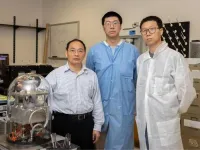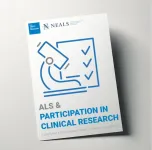(Press-News.org) In the age of generative-AI and large language models (LLMs), massive amounts of inauthentic content can be rapidly broadcasted on social media platforms. As a result, malicious actors are becoming more sophisticated, hijacking hashtags, artificially amplifying misleading content, and mass resharing propaganda.
These actions are often orchestrated by state-sponsored information operations (IOs), which attempt to sway public opinion during major geopolitical events such as the US elections, the Covid-19 pandemic, and more.
Combating these IOs has never been more crucial. Identifying influence campaigns with high-precision technology will significantly reduce the misclassification of legitimate users as IO drivers, ensuring social media providers or regulators do not mistakenly suspend accounts while trying to curb illicit activities.
In light of this, USC Information Sciences Institute (ISI) researcher Luca Luceri is co-leading an effort funded by the Defense Advanced Research Project Agency (DARPA) to identify and characterize influence campaigns on social media. His most recent paper “Unmasking the Web of Deceit: Uncovering Coordinated Activity to Expose Information Operations on Twitter” was presented at the Web Conference on May 13, 2024.
“My team and I have worked on modeling and identifying IO drivers such as bots and trolls for the past five to ten years,” Luceri said. “In this paper, we’ve advanced our methodologies to propose a suite of unsupervised and supervised machine learning models that can detect orchestrated influence campaigns from different countries within the platform X (formerly Twitter).”
A fused network of similar behaviors
Drawing from a comprehensive dataset of 49 million tweets from verified campaigns originating in six countries – China, Cuba, Egypt, Iran, Russia, and Venezuela – Luceri and his team have honed in on five sharing behaviors on X that IO drivers participate in.
These include co-retweeting (sharing identical tweets), co-URL (sharing the same links or URLs), hashtag sequence (using an identical sequence of hashtags within tweets), fast retweeting (quickly re-sharing content from the same users), and text similarity (tweets with resembling textual content).
Previous research focused on building networks that mapped out each type of behavior, examining the similarities between individual users on X. However, Luceri and his team noticed that these accounts often employ many strategies at the same time, which meant that monitoring one behavioral trace was not enough.
“We found that co-retweeting was massively used by campaigns in Cuba and Venezuela,” Luceri explained. “However, if we only examine co-retweeting without considering other behaviors, we would perform well in identifying some campaigns, such as those originating from Cuba and Venezuela, but poorly where co-retweeting was used less, such as in Russian campaigns.”
To capture a broader range of coordinated sharing behaviors, the researchers constructed a unified similarity network called a Fused Network. Then, they applied machine learning algorithms fed by topological properties of the fused network to classify these accounts’ similarities and predict their future participation in IOs.
Luceri and his team found that this method could be applicable to campaigns across the world. Multiple X users within the same campaign, no matter where they are from, exhibited remarkable collective similarity in their actions.
“I consider our work a paradigm shift in research methods, giving a new perspective in the identification of influence campaigns and their drivers,” said Luceri.
Unlocking new opportunities
The unsupervised machine learning model leverages well-known, yet underutilized network features achieving a 42% higher precision than other traditional approaches to detect influence campaigns. Luceri views this paper as a starting point that could open the way to further avenues of research.
“We can train models on the topological features of this similarity network, and make them work in complex scenarios: for instance, if different users from different countries interacted with each other, or more challenging situations where we have limited information about the campaigns,” Luceri remarked.
Luceri also presented another paper “Leveraging Large Language Models to Detect Influence Campaigns in Social Media” at the Web Conference, which received the best paper award from the International Workshop on Computational Methods for Online Discourse Analysis (BeyondFacts’24). The paper examines the potential of using LLMs to recognize the signs of AI-driven influence campaigns. This is particularly crucial in the current climate, where AI-created media is pervasive.
“These coordinated activities have consequences in real life,” said Luceri. “They have the power to spread misinformation and conspiracy theories that might lead to protests or attacks on our democracy, such as the interference of Russian trolls in the 2016 US election.”
Luceri and his team are committed to continuing the search for alternative strategies to identify influence campaigns and protect users susceptible to influence.
END
Detecting influence campaigns on X with AI and network science
USC ISI researchers have developed machine learning models to identify coordinated inauthentic behaviors by accounts on X involved in influence campaigns around the world
2024-05-16
ELSE PRESS RELEASES FROM THIS DATE:
Offering both colonoscopy and at-home tests doubled colorectal cancer screening
2024-05-16
The rate of colorectal cancer screenings more than doubled when patients were given a choice between which type of screening they wanted—a take-home kit or colonoscopy—compared to those who were only offered the colonoscopy, according to new research led by the Perelman School of Medicine at the University of Pennsylvania. Facilitated through a community health center in which about half of patients had Medicaid insurance, the study—published in Clinical Gastroenterology and Hepatology—provides insights about how to boost screenings among groups ...
A powerful tool speeds success in achieving highly efficient thermoelectric materials
2024-05-16
HOUSTON, May 16, 2024 – Thermoelectric materials could play an important role in the clean energy transition, as they can produce electricity from sources of heat that would otherwise go to waste without generating additional greenhouse gases or requiring large up-front investment. But their promise has been slowed by the fact that most current thermoelectric materials don’t efficiently produce enough power to be useful for many practical applications.
The search for new, more efficient materials involving complex chemical ...
Oropharyngeal cancer staging health record extraction using AI
2024-05-16
About The Study: The results of this study suggest that artificial intelligence may be associated with enhanced patient care and oncological decision-making in patients with oropharyngeal squamous cell carcinoma through detection of localized versus advanced cancer stages. Further model refinement and external validation with electronic health records at different institutions are necessary to improve algorithm accuracy and clinical applicability.
Corresponding Author: To contact the corresponding author, Antoine Eskander, M.D., email antoine.eskander@mail.utoronto.ca.
To access the ...
Airborne technology developed at USC brings new hope to map shallow aquifers in Earth’s most arid deserts
2024-05-16
Water shortages are expanding across the Earth. This is particularly acute in desert areas of the Middle East that are subject to both drought and extreme conditions such as flooding. As a result of these uncertainties, there is an increasing reliance on shallow aquifers to mitigate these shortages. However, the characteristics of these aquifers remain poorly understood due to the reliance on sporadic well logs for their management.
To address this challenge a team of researchers at the USC Viterbi School of Engineering Ming Hsieh Department of Electrical and Computer Engineering along with collaborators ...
Mount Sinai experts to present new research on preeclampsia, preterm birth, doula care and more at the 2024 ACOG Annual Clinical and Scientific Meeting
2024-05-16
Women’s health experts from the Raquel and Jaime Gilinski Department of Obstetrics, Gynecology and Reproductive Science at the Icahn School of Medicine at Mount Sinai will present new research at the 2024 American College of Obstetricians and Gynecologists (ACOG) Annual Clinical and Scientific Meeting in San Francisco from May 17–19. Please let me know if you would like to coordinate an interview about their forthcoming presentations. Mount Sinai obstetricians and gynecologists are also available to comment on breaking news and other trending topics on prenatal care and women’s ...
Normothermic perfusion system extends life of organs waiting for transplant
2024-05-16
In the United States, about 30-40% of donor hearts aren't considered for transplant due to inadequate function in the donor.
This creates a drop in the number of donated hearts that are available to be matched with someone who needs a heart transplant.
A team at University of Michigan Health led by Alvaro Rojas-Pena, M.D., a research investigator with the section of transplantation surgery at University of Michigan Health has spent the past eight years looking at better ways to transport organs for donation, specifically hearts, to improve the number of organs ...
Study: Large language models can’t effectively recognize users’ motivation, but can support behavior change for those ready to act
2024-05-16
CHAMPAIGN, Ill. — Large language model-based chatbots have the potential to promote healthy changes in behavior. But researchers from the ACTION Lab at the University of Illinois Urbana-Champaign have found that the artificial intelligence tools don’t effectively recognize certain motivational states of users and therefore don’t provide them with appropriate information.
Michelle Bak, a doctoral student in information sciences, and information sciences professor Jessie Chin reported their research in the Journal of the American Medical Informatics Association.
Large language model-based chatbots — also known as generative conversational agents ...
In September, securities watchdogs bark more, bite less
2024-05-16
AUSTIN, Texas -- The Securities and Exchange Commission acts as Wall Street’s traffic cop, fining companies for such infractions as securities fraud and insider trading. New research from Texas McCombs finds another parallel between the SEC and traffic enforcement: pressure to meet self-imposed quotas.
Assistant accounting professors Matthew Kubic and Sara Toynbee find that the agency files twice as many enforcement cases in September as in other months, a phenomenon they call the September spike. They also link the increase in cases to smaller fines that reduce what the government takes in from violators.
The reason for the ...
New guide demystifies participation in ALS clinical research
2024-05-16
As researchers search for new insights into Amyotrophic Lateral Sclerosis (ALS), there is an ever-greater need for data from clinical trials and research studies. However, many people living with ALS are not certain how to get involved with clinical research, and the demographics of current ALS clinical trial participants are not representative of the full population of people living with the disease worldwide.
To address the critical need for diversity and accessibility in ALS clinical trials and research studies, the Illinois-based Les Turner ALS Foundation has published a new ...
Lurie Children’s Hospital launches first peer-reviewed journal on health advocacy
2024-05-16
Ann & Robert H. Lurie Children’s Hospital of Chicago announces the launch of the Journal of Health Advocacy (JHA), the first of its kind peer-reviewed open access journal housed within the organization’s Patrick M. Magoon Institute for Healthy Communities. This new journal bridges the gap between knowledge and action to empower individuals and groups to address real-world challenges to health equity. It opened for submissions May 1, 2024.
“Disseminating and recognizing advocacy that is so often successful ...
LAST 30 PRESS RELEASES:
Numbers in our sights affect how we perceive space
SIMJ announces global collaborative book project in commemoration of its 75th anniversary
Air pollution exposure and birth weight
Obstructive sleep apnea risk and mental health conditions among older adults
How talking slows eye movements behind the wheel
The Ceramic Society of Japan’s Oxoate Ceramics Research Association launches new international book project
Heart-brain connection: international study reveals the role of the vagus nerve in keeping the heart young
Researchers identify Rb1 as a predictive biomarker for a new therapeutic strategy in some breast cancers
Survey reveals ethical gaps slowing AI adoption in pediatric surgery
Stimulant ADHD medications work differently than thought
AI overestimates how smart people are, according to HSE economists
HSE researchers create genome-wide map of quadruplexes
Scientists boost cell "powerhouses" to burn more calories
Automatic label checking: The missing step in making reliable medical AI
Low daily alcohol intake linked to 50% heightened mouth cancer risk in India
American Meteorological Society announces Rick Spinrad as 2026 President-Elect
Biomass-based carbon capture spotlighted in newly released global climate webinar recording
Illuminating invisible nano pollutants: advanced bioimaging tracks the full journey of emerging nanoscale contaminants in living systems
How does age affect recovery from spinal cord injury?
Novel AI tool offers prognosis for patients with head and neck cancer
Fathers’ microplastic exposure tied to their children’s metabolic problems
Research validates laboratory model for studying high-grade serous ovarian cancer
SIR 2026 delivers transformative breakthroughs in minimally invasive medicine to improve patient care
Stem Cell Reports most downloaded papers of 2025 highlight the breadth and impact of stem cell research
Oxford-led study estimates NHS spends around 3% of its primary and secondary care budget on the health impacts of heat and cold in England
A researcher’s long quest leads to a smart composite breakthrough
Urban wild bees act as “microbial sensors” of city health.
New study finds where you live affects recovery after a hip fracture
Forecasting the impact of fully automated vehicle adoption on US road traffic injuries
Alcohol-related hospitalizations from 2016 to 2022
[Press-News.org] Detecting influence campaigns on X with AI and network scienceUSC ISI researchers have developed machine learning models to identify coordinated inauthentic behaviors by accounts on X involved in influence campaigns around the world


